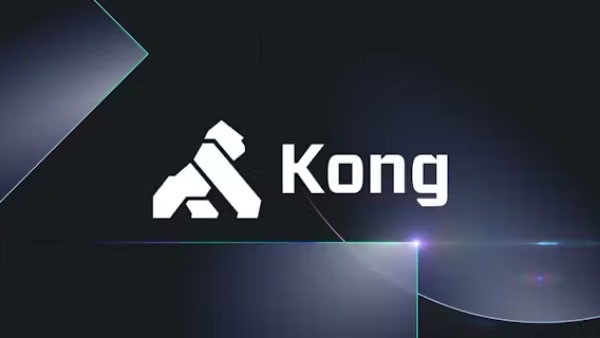The convergence reality
Organizations are gradually realizing that API and AI observability aren't two separate problems; they're intertwined and require unified solutions. Without waiting on engineering, it's hard to answer simple questions like "Who's using my APIs?" or "Which APIs are causing the most issues?" Now multiply that complexity when those same APIs are powering AI agents, consuming LLM responses, and coordinating with MCP servers.
Traditional API monitoring helps you keep a finger on request volumes, latencies, and error rates. But when that API request triggers an AI workflow involving multiple model calls, semantic processing, and context retrieval, you invariably need visibility into:
- Cross-system latency: Understanding true end-to-end performance across API and AI components
- Cost attribution: Mapping expensive LLM token consumption back to specific API consumers
- Failure correlation: Identifying when API errors cascade into AI failures or vice versa
- Security posture: Monitoring both API authentication and AI content filtering in one view
The hidden infrastructure challenge
Without a unified approach to observability, much of this data is locked in technical tools. Most analytics live in logs, monitoring systems, or dashboards built for engineers. This problem compounds when you're managing both traditional APIs and AI systems with different monitoring stacks, different metrics vocabularies, and different operational teams.
The result? Operational blindness at the worst possible time. When your AI-powered customer service API starts returning errors, you need to quickly determine where the issue is — in your API gateway, your microservices, your MCP server connectivity, or your LLM provider. With fragmented observability, this turns into an expensive game of troubleshooting telephone calls. And this doesn’t even take into account blindness into your event streaming ecosystem.
Cost optimization gaps are another challenge. Without unified metrics, you can't figure out ‘which API consumers are driving our highest LLM costs?’ or ‘Are we caching AI responses effectively across our API endpoints?’
Security and governance risks multiply exponentially. The good news is Kong provides the tools necessary to achieve a robust security posture, leveraging log aggregation and modern standards like OpenTelemetry. But many organizations apply different security monitoring to their API and AI infrastructure, widening dangerous visibility gaps.
The unified observability advantage
Many leading organizations have already implemented unified observability architectures that converge API and AI monitoring as connected domains, enabled by Kong Konnect through AI Gateway and Konnect Advanced Analytics. This approach delivers several critical advantages, including comprehensive performance visibility, advanced analytics capabilities, and streamlined operations.
- Comprehensive performance visibility: Dashboards are the tool people turn to in both cases. They take a constant stream of signals, like requests, latencies, status codes, and errors and turn them into a view your team can act on. Unified dashboards show not just API performance metrics, but how those metrics correlate with AI system behavior, token consumption, and model performance.
- Advanced analytics capabilities: API product managers need ongoing visibility into how their APIs are used, how they perform, and where developers run into problems. In AI-native applications, this visibility must extend to understanding which API consumers are driving AI costs, how AI responses affect API adoption, and where AI failures impact overall API reliability.
- Streamlined operations: Instead of coordinating between multiple monitoring systems during incidents, teams get a single source of truth that spans their entire application architecture, no matter if that’s an API, AI, or real-time application. All of these kinds of connectivity can be observed in Kong Konnect.
The strategic imperative
The convergence of API and AI technologies isn't futuristic; it's happening right now. Organizations that keep these domains separate will face significant consequences.
- Slower incident response as teams struggle to correlate issues across fragmented systems
- Higher operational costs due to inefficient resource allocation and over-provisioning
- Security vulnerabilities from inconsistent governance across touchpoints
- Missed optimization opportunities due to incomplete visibility into system behavior
As AI adoption skyrockets, the organizations with unified observability will respond faster, optimize more effectively, and scale more reliably.
Let API Summit 2025 be the starting point
The path to unified API and AI observability requires both strategic vision and tactical execution. You need to understand the specific architectures, dashboard templates, security patterns, and automation approaches that make unified observability possible at enterprise scale.
And we’ll discuss this in detail at API Summit 2025.
Unlike generic conferences, API Summit brings together practitioners actively implementing unified observability, vendors building next-generation monitoring solutions, and platform teams defining the future of API and AI governance.
At Kong's API Summit, you’ll hear experts explaining:
- Proven implementation patterns from organizations successfully unifying API and AI observability
- Technical sessions with advanced analytics platforms and unified dashboard strategies
- Vendor ecosystem insights to evaluate the latest solutions in a concentrated setting
- Strategic guidance from teams who've scaled unified observability across global enterprises
Most importantly, you'll gain the tactical knowledge essential for implementing unified observability that scales with your AI ambitions while maintaining operational simplicity.
The convergence challenge is real, but so is the competitive advantage for organizations that solve it early on. Don't let fragmented observability become your bottleneck as AI adoption accelerates. Join the teams building the future of unified API and AI governance. Register for API Summit today.



